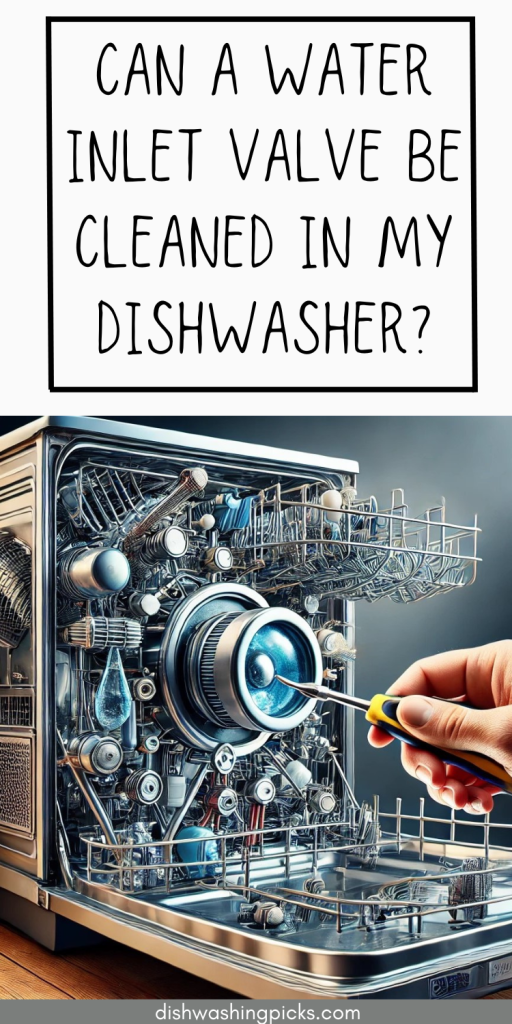
So, your dishwasher isn’t filling up with water properly—or worse, it’s barely getting any water at all. Suddenly, you’re left wondering: “Is my water inlet valve clogged? And can I just clean it instead of replacing it?”
Great questions! The water inlet valve is the gatekeeper of your dishwasher’s water supply—and if it’s blocked, your entire dishwashing process is in trouble. But can it be cleaned, or is replacement your only option? Let’s dive in.
First, What Does the Water Inlet Valve Do?
Before we talk about cleaning it, let’s break down what this little component actually does.
Think of your dishwasher’s water inlet valve like a bouncer at a nightclub—it controls who (or in this case, how much water) gets in. When your dishwasher starts, the valve opens, allowing water to flow into the tub. Once the right amount is in, it shuts off.
- But when this valve gets clogged with debris, hard water buildup, or food particles, it either:
- Doesn’t let enough water in (leading to poorly cleaned dishes)
- Doesn’t close properly, causing leaks
- Stops working altogether, meaning no water gets in at all
If any of these sound familiar, it might be time to check that valve.
Can You Clean a Water Inlet Valve?
Yes—but with conditions.
The truth is, while minor blockages and debris can sometimes be cleaned, a severely clogged or damaged valve often needs to be replaced. Here’s how to figure out if cleaning is an option for you.
Step 1: Check for Signs of a Clogged Valve
Before you start unscrewing things, let’s confirm the issue. Look out for these signs:
- Your dishwasher isn’t filling with enough water
- You hear a humming noise but no water enters
- Water pressure is weak or inconsistent
- The dishwasher won’t start because it’s not detecting water
If any of these sound like your dishwasher’s symptoms, your inlet valve might be the culprit.
Step 2: How to Clean Your Dishwasher’s Water Inlet Valve
If you’re feeling handy and want to give cleaning a shot, here’s what to do:
What You’ll Need:
✔ A screwdriver
✔ Pliers
✔ A bowl or towel (to catch any leaking water)
✔ A soft brush or toothbrush
✔ White vinegar (for dissolving buildup)
✔ A needle or pin (to clear small blockages)
The Cleaning Process:
- Turn Off the Power & Water Supply – Safety first! Unplug your dishwasher and shut off the water valve under your sink.
- Locate the Water Inlet Valve – It’s usually at the bottom of your dishwasher, behind the lower access panel.
- Remove the Valve – Use a screwdriver to detach the panel, then gently disconnect the hoses attached to the valve. (Have that towel ready for any water drips!)
- Check for Blockages – Look inside the valve screen for debris, mineral deposits, or gunk buildup.
- Soak & Scrub – If you see buildup, soak the valve in white vinegar for 30 minutes and scrub it gently with a toothbrush.
- Use a Pin for Stubborn Clogs – If small particles are lodged in the valve’s filter screen, a fine needle or pin can help remove them.
- Rinse & Reinstall – Once clean, rinse the valve thoroughly, dry it, and reattach it securely.
- Turn Everything Back On – Restore power and water, then run a test cycle to see if the water flow improves.
When Should You Replace the Valve Instead?
While cleaning can work in some cases, sometimes it’s just not enough. If your valve is:
- Cracked or visibly damaged
- Not responding even after cleaning
- Making a loud buzzing or humming noise but still not working
… then it’s time for a replacement. The good news? A new water inlet valve isn’t too expensive (usually $20-$50), and swapping it out is a straightforward DIY fix.
Final Verdict: Clean or Replace?
✔ If the issue is mild clogging, cleaning the valve might do the trick.
✔ If the valve is badly clogged or damaged, replacement is your best bet.
Either way, a properly functioning water inlet valve is key to getting clean dishes—so don’t ignore the problem!
